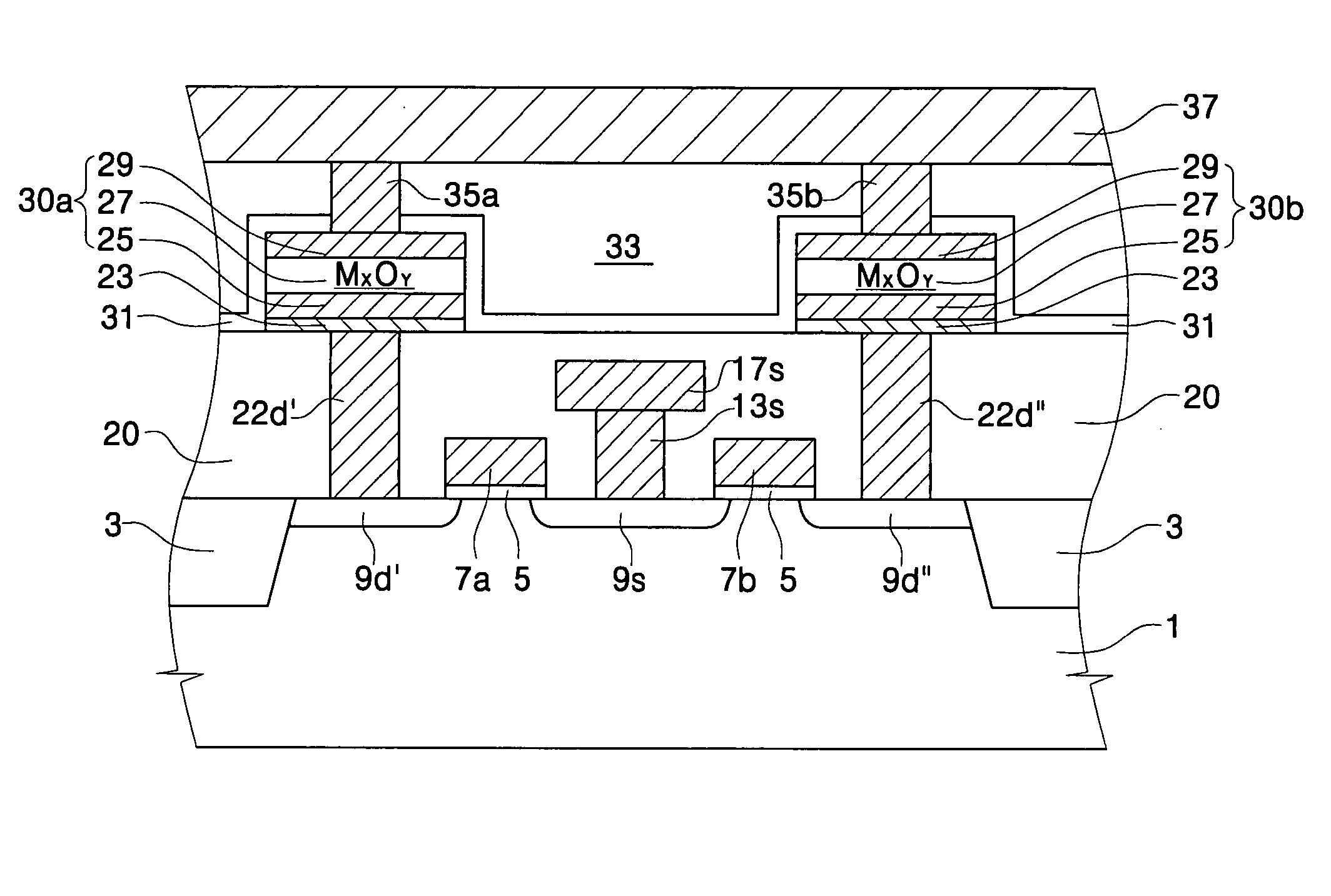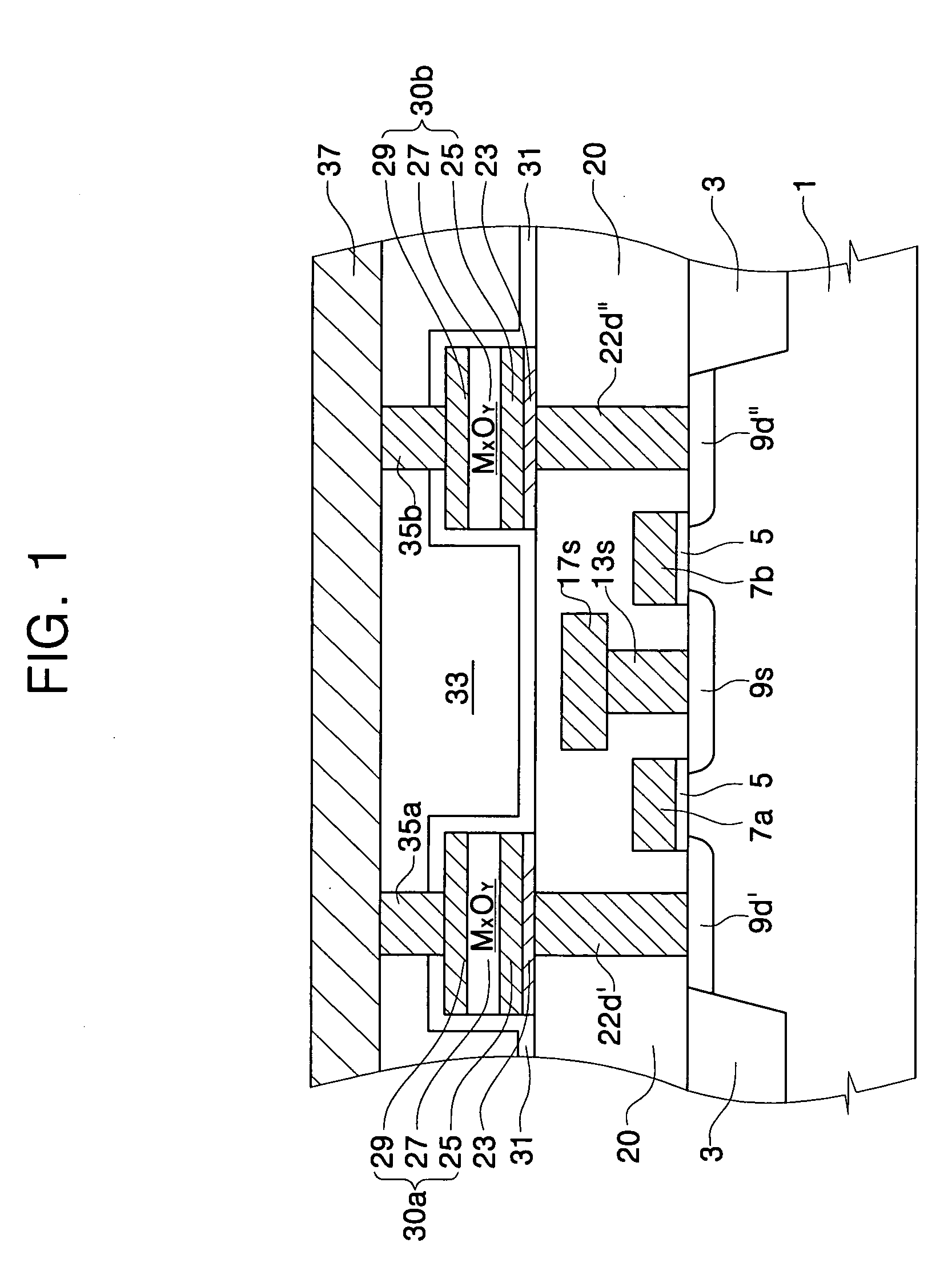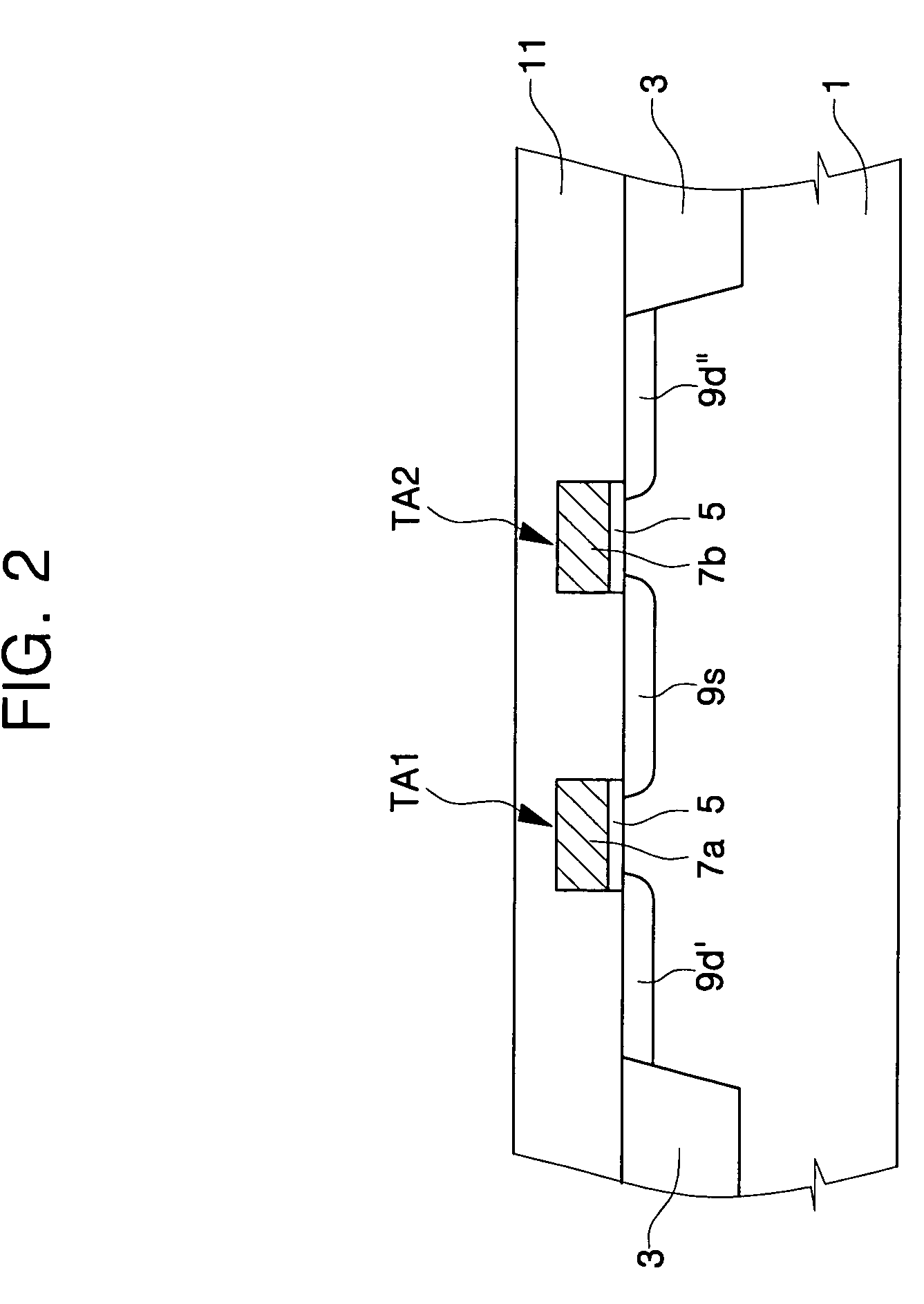Non-volatile memory cells employing a transition metal oxide layer as a data storage material layer and methods of manufacturing the same
a technology of transition metal oxide and data storage material, which is applied in the field of semiconductor devices, can solve the problems of difficult to form a uniform composition pcmo layer on the semiconductor substrate, difficulty in patterning the pcmo layer using a conventional photolithography/etching process, and difficulty in improving the integration density of resistance ram devices
- Summary
- Abstract
- Description
- Claims
- Application Information
AI Technical Summary
Benefits of technology
Problems solved by technology
Method used
Image
Examples
Embodiment Construction
[0024] The present invention will now be described more fully with reference to the accompanying drawings, in which exemplary embodiments of the invention are shown. The invention may, however, be embodied in many different forms and should not be construed as being limited to the embodiments set forth herein; rather, these embodiments are provided so that this disclosure will be thorough and complete, and will fully convey the concept of the invention to those skilled in the art. In the drawings, the thicknesses of layers and regions are exaggerated for clarity. Like reference numerals in the drawings denote like elements.
[0025]FIG. 1 is a cross-sectional view illustrating a pair of non-volatile memory cells, e.g., a pair of resistance RAM cells according to embodiments of present invention. Referring to FIG. 1, an isolation layer 3 is provided at a predetermined region of a semiconductor substrate 1 to define an active region. First and second drain regions 9d′ and 9d″, which are...
PUM
 Login to View More
Login to View More Abstract
Description
Claims
Application Information
 Login to View More
Login to View More - R&D
- Intellectual Property
- Life Sciences
- Materials
- Tech Scout
- Unparalleled Data Quality
- Higher Quality Content
- 60% Fewer Hallucinations
Browse by: Latest US Patents, China's latest patents, Technical Efficacy Thesaurus, Application Domain, Technology Topic, Popular Technical Reports.
© 2025 PatSnap. All rights reserved.Legal|Privacy policy|Modern Slavery Act Transparency Statement|Sitemap|About US| Contact US: help@patsnap.com



